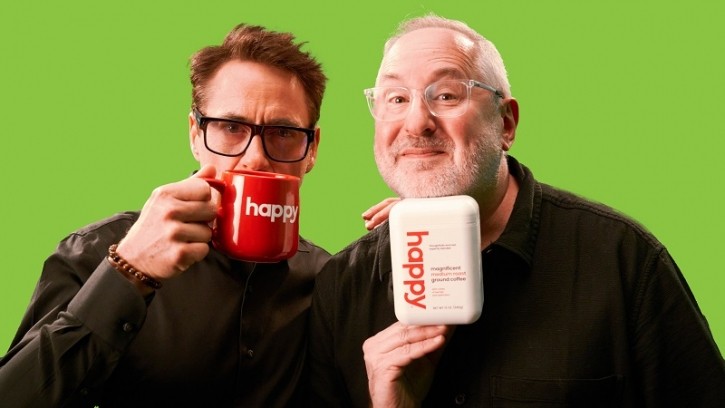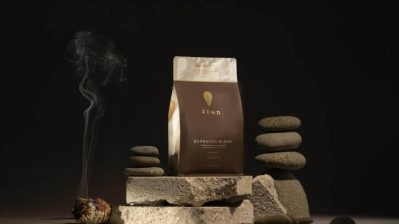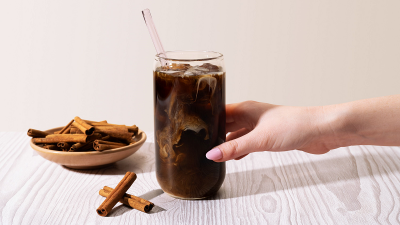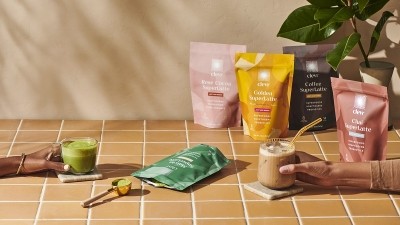Happy embraces ‘modern sensibility,’ mental-health advocacy to differentiate in coffee

“There seemed to be this opportunity to touch on a different emotional chord, and looking at a lot of other offerings that are out there, the storytelling around the brand seemed a little, in some cases tired, in some cases aggressive, in some cases ... traditional, and we thought there was a modern sensibility that wasn't really being addressed. And the other thing is coffee makes people happy,” Dubitsky told FoodNavigator-USA.
Roasting “slow and low”
After starting the oral care brand Hello Products and co-founding personal care brand eos, Dubitsky wanted to disrupt a highly commoditized category using design and purpose.
“We wanted to play to a large addressable audience of coffee drinkers, but provide a really great experience. And the challenge there for us [was to] do it at a scale that was repeatable,” Dubitksy said. “How can we make something that was really good and make it really consistent, and make sure we could price it so the largest number of people could get it? That was really important to us. It can't just be a pretty pack and a cool name. [It] has to taste amazing and be consistent.”
The happy team designed its packaging to be modern – a white cube with text and no imagery – and more “thoughtful,” he explained. Unlike many coffee bags that can’t be recycled, happy’s packaging and label are 100% recyclable, he added.
Happy coffee is roasted “slow and low,” meaning at “lower temperature and longer time,” to produce “a specialty-grade coffee, but with commercially available beans,” Dubitksy said. Currently, happy is available in light, medium, and dark roast in either ground, whole bean, instant, or a pod format compatible with K-Cup brewers.
Happy offered equity stake to NAMI to support mental health
Dubitsky and Downey Jr. also wanted to embrace the happiness that comes from drinking coffee and help those who might be struggling with mental-health issues.
“Not a lot of people seem to be as happy as I think we all wish these days. So, it seemed like there was an interesting set of parameters that we could play within and then make an awesome brand. Yes, we have an awesome experience, but hopefully, do it in a way that is a little bit different with a different kind of purpose or set of set of purposes behind it.”
To promote better mental health, happy gave the National Alliance on Mental Illness (NAMI) an equity stake in the brand and is using its packaging to spread awareness about the organization, Dubitsky said.
“[NAMI] said the No. 1 thing that they heard from lots of folks was this is amazing what you do if only we had known about it sooner. ... We said, ‘Well, it sounds like that's an awareness issue. What if we put information about NAMI on all of our products because they're going to be in a lot of stores?’ That is what we did. So, on every package, there's a QR code that takes you right to NAMI.”
‘Building [happy] to go the distance’
Having previously launched and sold brands, Dubitsky also shared how he’s “building [happy] to go the distance.”
While happy's initial funding was "wildly oversubscribed," Dubitsky and Downey Jr. did “the requisite financial engineering upfront," investing in its supply chain, and committing to running the brand responsibly. Though passion and idea are crucial to growing a brand, “there's a lot to love about margin and operating income,” Dubitsky added.
“We're businesspeople. ... We're very mindful of making sure this isn't a hobby. This isn't a sideline. [Downey Jr.] isn't in this thing casually. He's been in a lot of big retailer meetings with us, got on planes and come to retailer meetings. He's not a spokesperson — he's my co-founder and partner.”
As part of going the difference, Dubitsky also rejected the concept of building brands just to sell, saying, "We're building this thing to be... as durable and enduring as it is in theory."
“The plan is to make the most beautiful, delicious, thoughtful products we can and make them available to the largest number of people — that's the plan. The plan isn't what is your exit strategy. The plan is to make people really happy — that's the plan. And if we do that right, the other things take care of itself. And you can't do that, you can't make people happy, by providing a great product and beautifully designed and thoughtfully sourced and responsibly harvested and all that stuff if you're not minding the business.”





















